Republic Title Tip: Unlocking Savings with Texas Tax Exemptions for New Homeowners

Becoming a homeowner in Texas is a significant milestone, but it also comes with financial responsibilities. One aspect that new homeowners should be aware of is property taxes but here’s the exciting part: Texas offers a range of property tax exemptions that can save you money and make your homeownership journey even sweeter. In this post, our […]
Texas Housing Insight November 2023 Summary
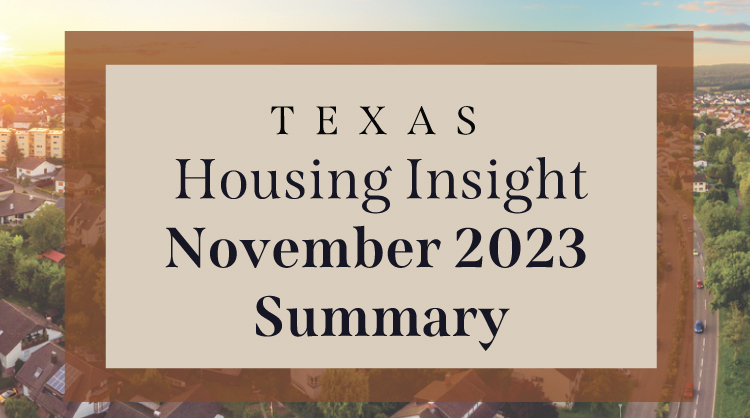
The housing market remains tight despite mortgage rates falling from their elevated levels. Home sales decreased just shy of 1 percent month over month (MOM). Prices did not fall alongside sales as most of the state experienced minimal change in prices. Construction permits plummeted in November despite construction starts increasing. Homes sat on the market […]
Texas Housing Insight – October 2023 Summary
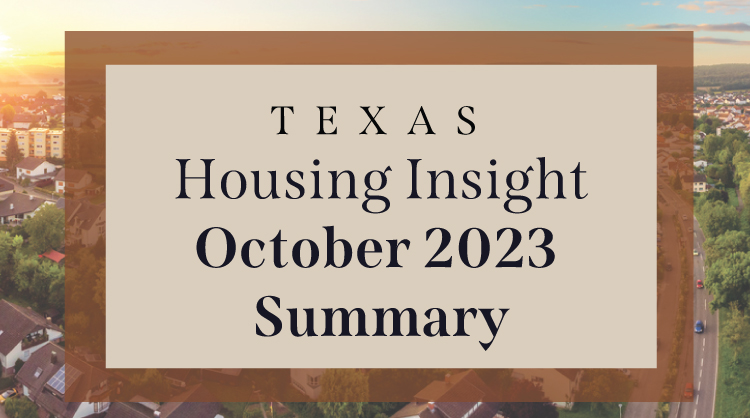
High mortgage rates continue to put downward pressure on the housing market, with Texas home sales decreasing 5.9 percent year-over-year (YOY). The average price fell alongside sales, with homes costing around $6,000 less than in September. Demand for new construction increased despite the high entry barrier into the housing market. Homes continue to sit on […]
Proposition 4 – Property Tax Relief for Homeowners
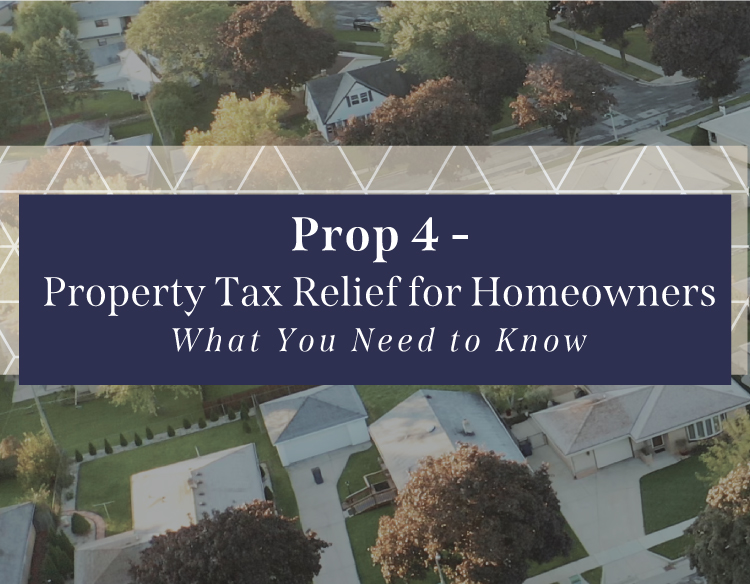
The largest property tax cut in Texas history was passed on November 7, 2023. Here are the key points of the bill and what you need to know. HOMESTEAD EXEMPTION TO INCREASE FROM $40,000 TO $100,000 UP TO AN ADDITIONAL $15,000 EXEMPTION FOR CERTAIN ELDERLY AND DISABLED HOMEOWNERS FOR THE 2023 PROPERTY TAX YEAR APPRAISAL […]
September 2023 DFW Real Estate Stats

https://youtu.be/qfLlU2-z_eU In September 2023, active listings varied across counties. Collin County witnessed a 10% decline, Denton County experienced a 10% decrease, while Dallas County and Tarrant County saw increases of almost 4% and 3.7% respectively. Rockwall County noted a 4.5% reduction in active listings. Regarding closed price per square foot, Collin County saw an increase […]
Texas Housing Insight August 2023
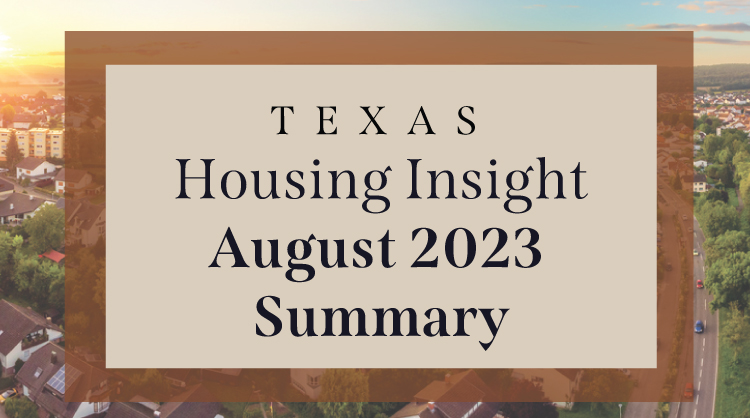
August was a positive month for Texas’ residential real estate industry. Despite persistently high interest rates, total home sales picked up 9.5 percent on the consumer side, and construction permits accelerated by 5.3 percent on the supplier side. Amid the growth, the median price slipped for the first time after seven consecutive upticks. While the […]
MUDS, PIDS, and Other Special Districts

The DFW area is home to some of the largest master planned communities and subdivisions in the country. As these areas are developed, Municipal Utility Districts (MUDs), Public Improvement Districts (PIDs) and other special districts are often set-up to finance the construction of vital public infrastructure that does not yet exist. The cost of the […]
Texas Housing Insight July 2023 Summary
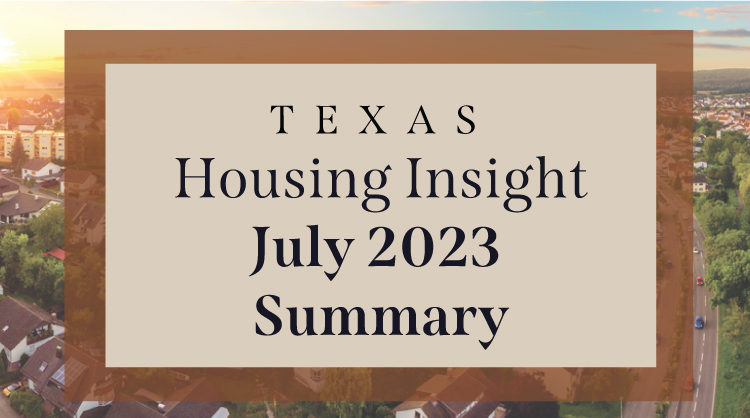
The persistent rise in mortgage rates continued to exert a cooling effect on the housing market. Texas’ home sales experienced an 8.4 percent year-over-year decline in July. Despite this diminished home demand, the scarcity of existing home sales contributed to a 2.1 percent increase in the state’s median price in 2023, leaving the index for […]
Texas House and Senate Agree to Largest Property Tax Cut in Texas History
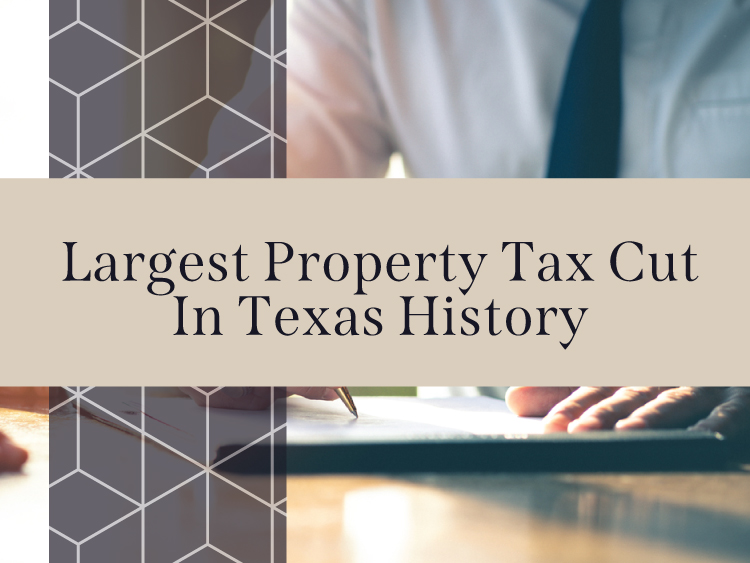
On August 9th, Governor Greg Abbott ceremonially signed legislation delivering the largest property tax cut in Texas history – $18 billion – passed during Special Session #2 of the 88th Legislature in New Caney. Under Senate Bill 2 and Senate Bill 3, $18 billion of Texas’ historic budget surplus will be allocated toward driving down school district property […]
Texas Housing Insight June 2023 Summary
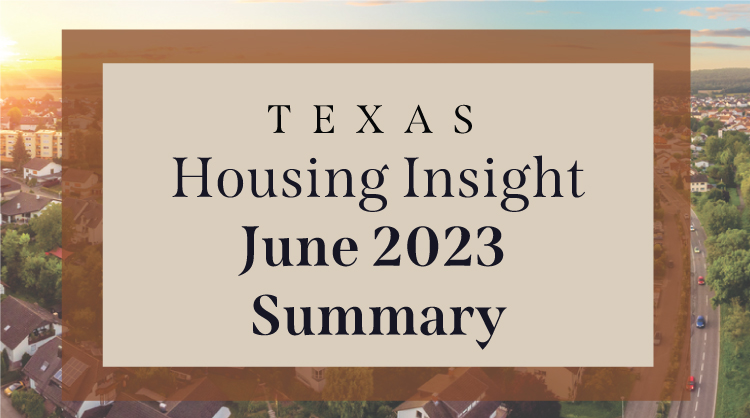
Contrary to investors’ fears, the “housing bubble” did not burst. Instead, a harmonious decline in both supply and demand has struck a balance, resulting in a boost to the housing median price. Throughout the first half of 2023, Texas’ median price has consistently shown a 0.3-0.4 percent growth every month. Due to current owners’ reluctance […]
